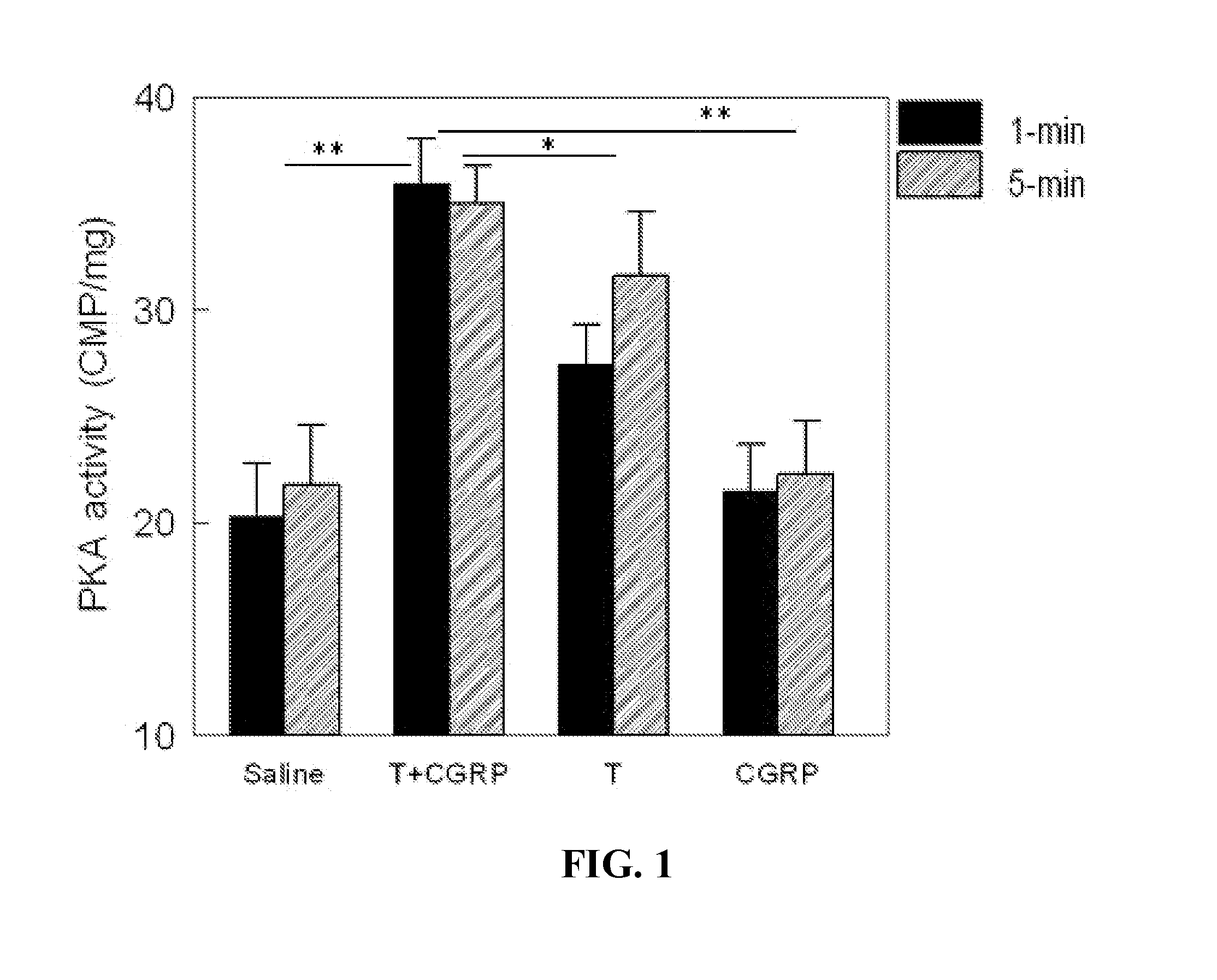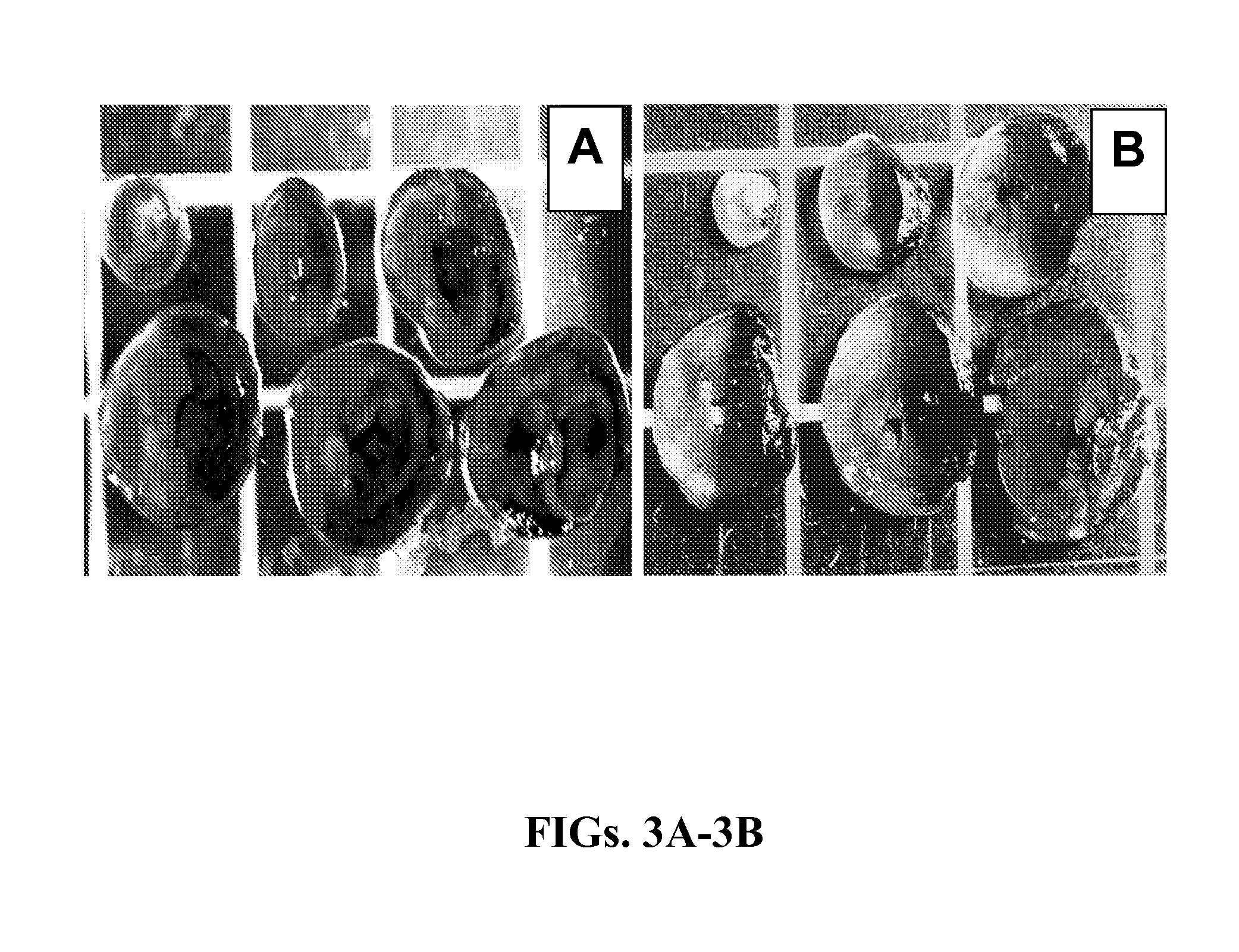Reducing myocardial reperfusion injury by the combination therapy of protein kinase a activation and b1-adrenergic receptor blockade
a technology of protein kinase and b1adrenergic receptor, which is applied in the field of biomarker, medicine, cardiology, can solve the problems of no drug clinically available that can be given, no heart protection, and inability to so as to improve the infarct-size reducing and/or limiting effect of pka activators, reduce the effect of reperfusion injury and reduce the size of the infar
- Summary
- Abstract
- Description
- Claims
- Application Information
AI Technical Summary
Benefits of technology
Problems solved by technology
Method used
Image
Examples
example 1
Exogenous CGRP-β2-AR Agonist Confers Synergistic Cardioprotection and PKA Activation
[0128]Background: β2-adrenoreceptor (β2-AR) agonist has have been used clinically for asthma treatment for 20 years with favorable clinical safety profile. While calcitonin gene-related peptide (CGRP) is still an investigational drug, it has been tested in numerous clinical trials. CGRP has a favorable clinical safety profile based on the literature. Thus, the combination therapy with β2-AR agonist and CGRP may provide a readily available approach which can quickly translate basic science knowledge into clinical practice. β2-AR stimulation and CGRP secretion each confers infarct-size (IS) reduction during experimental myocardial infarction (MI). The inventors have hypothesized that (1) endogenous stimulation of CGRP-receptor and β2-AR exerts synergistic IS-reduction and (2) that IS-reduction is achievable pharmacologically by the combination therapy with β2-AR agonist and CGRP when delivered relative...
example 2
Post-Infarction Therapy with PKA Activation and β1-Adrenergic Receptor Blockade Confers Infarct-Size Reduction In Vivo
[0132]Experimental Myocardial Ischemia-Reperfusion Model. The rat myocardial ischemia-reperfusion model will be used (Birnbaum et al., 2005; Huang et al., 2007a). This model consists of 30 min coronary artery occlusion followed by 4-hr reperfusion.
[0133]Protocol 1: To demonstrate the effect of PKA activator on infarct size reduction, a known PKA activator, milrinone (5 μg / kg / min) will be intravenously infused to rats starting at the last 5-minute of 30-minute ischemia to the first 5-minute of 4-hour reperfusion. To determine the effect of β1-adrenergic receptor antagonist and the synergistic action of both PKA activator and β1-adrenergic receptor antagonist, esmolol (10 g / kg / min) will be intravenously infused to rats with or without milrinone. Arterial blood pressure and heart rate will be monitored continuously throughout the experiments.
[0134]Method for in vivo myo...
example 3
PKA Activation Confers Myocyte Protection Against Ischemia / Reperfusion In Vitro
[0136]To verify that infarct-size reducing or limiting effect is a direct product of PKA activation on myocyte survival but not a secondary effect due to salutatory coronary / systemic hemodynamic alternations, the inventors tested the effect of PKA activation by milrinone on isolated rat ventricular myocytes in primary culture. In vitro myocyte ischemia-reperfusion study consists of 2-hour hypoxia followed by 1-hour re-oxygenation. Hypoxia is created by layering mineral oil over the cells. Re-oxygenation is made by removal of the oil. Myocyte death is quantified at the end of 1-hour reperfusion.
[0137]The inventors have shown that activation of PKA by milrinone significantly reduces myocyte death by 11%, compared with the saline control. Milrinone induced cell protection against ischemia reperfusion is abolished in the presence of PKA inhibition (Rp-CAMP 100 μmol / L). (FIG. 4)
PUM
| Property | Measurement | Unit |
|---|---|---|
| Cell angle | aaaaa | aaaaa |
Abstract
Description
Claims
Application Information
 Login to View More
Login to View More - R&D
- Intellectual Property
- Life Sciences
- Materials
- Tech Scout
- Unparalleled Data Quality
- Higher Quality Content
- 60% Fewer Hallucinations
Browse by: Latest US Patents, China's latest patents, Technical Efficacy Thesaurus, Application Domain, Technology Topic, Popular Technical Reports.
© 2025 PatSnap. All rights reserved.Legal|Privacy policy|Modern Slavery Act Transparency Statement|Sitemap|About US| Contact US: help@patsnap.com



